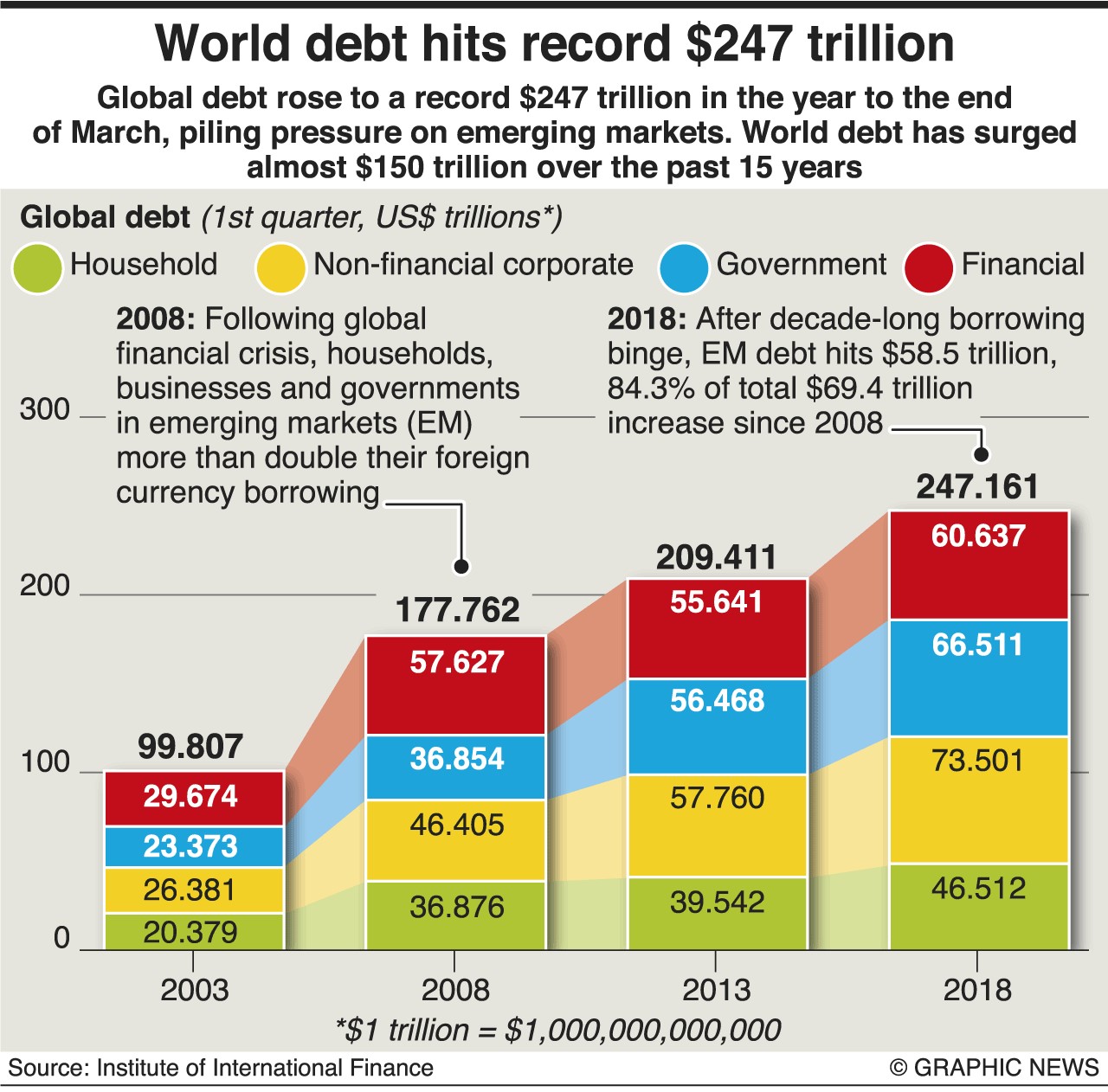Global debt has reached an alarming $247 trillion in the first quarter of 2018, according to a report from the Institute of International Finance (IIF), which puts debt at $29 trillion higher than it was just in the fourth quarter of 2016.
Sector-by-sector, from household and government debt, to financial and non-financial corporate debt, the world is drowning.
Government debt the world over is up to $66.5 trillion—a $10-trillion jump from 2013—while the non-financial corporate sector accounted for $73.5 trillion in debt in the first quarter of this year, up from $57.7 trillion in 2013.

(Click to enlarge)
Canada, France and Switzerland have seen huge upticks in non-financial corporate debt, while both Switzerland and Denmark have seen marked increases in household debt since the first quarter of last year.
Government debt to-GDP ratios have surged in the U.S., Australia and Greece, but actually declined significantly in Germany. But the sharpest increases in government debt went to Brazil, Saudi Arabia, Nigeria and Argentina.
Total emerging market debt, not including financials, rose by $2.5 trillion to a new record of $58.5 trillion in the first quarter of this year. Notably, Colombia, Argentina and the Philippines recorded a sharp increase in corporate debt-to-GDP ratios. However, Turkey and China saw some decline in this ratio, even as household debt to-GDP levels rose significantly in both: in China to almost 50 percent; Chile, over 45 percent, and Colombia (30 percent). Related: These 3 Industries Are Immune To The Trade War
As corporate and household debt soar in mature markets, the debt-to-GDP ratio has topped 318 percent. It’s significant because this is its first quarterly increase in two years. And it’s this ratio that has everyone concerned.
Overall, global debt has risen by over $8 trillion in the second quarter of this year, outpacing anything since the first quarter of 2016. From the IIF’s perspective, this means that the quality of debt has declined, particularly in emerging markets.
“The global debt-to-GDP ratio (318%) rose for the first time in over a year. With global growth losing some momentum and becoming more divergent, and U.S. rates rising steadily, worries about credit risk are returning to the fore—including in many mature economies,” the IIF said in its report.
"After a decade of low interest rates, the corporate and public debt in many places has ballooned to a staggering $164 trillion," CEO of the World Bank, Kristalina Georgieva, told Bloomberg. “With interest rates going up, attention on debt sustainability has to be stronger.”
Chief Americas economist at Nataxis, Joseph LaVorgna, thinks that corporate sector debt is very concerning because it’s highly leveraged and vulnerable to higher interest rates.
Related: Is This The Answer To The Looming U.S. Healthcare Crisis?
“Firms have used artificially low rates to borrow in the capital markets and only buy back stock in the equity market,” LaVorgna told CNBC. “The inherent instability of debt over equity financing suggests that the next downturn could hit investment spending unusually hard.”
Even U.S. National Security Director Dan Coats is worried, according to CNBC. He called America’s $21 trillion debt “a dire threat to our economic and national security.”
And that’s not even considering the massive impact on assets a looming $200-billion trade war move could have.
By Damir Kaletovic for Safehaven.com
More Top Reads From Safehaven.com:

















